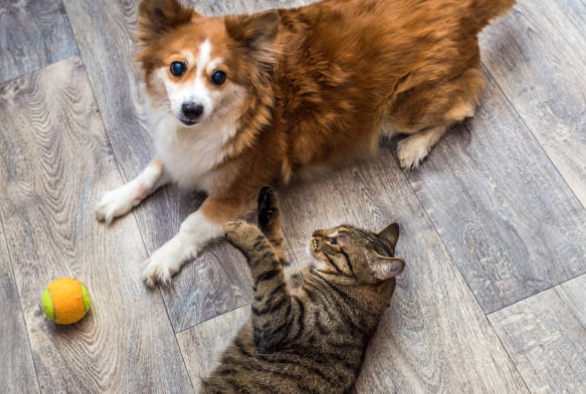Playing is fundamental for the development of puppies, but these activities are also very important for adult animals. There are many reasons why games are an important part of pets’ daily lives. In general, animals that interact with their owners and other pets are more docile, sociable, and receptive to obedience classes. Furthermore, games between pets and their owners provide a good portion of the daily exercise that a healthy animal needs.
However, physical activity and interaction with people and other pets are not the only benefits that playing can provide to dogs and cats. Pets that play every day, whether with their owners, with other pets, or with suitable toys, tend to have calmer behavior. Any activity with toys, people, or other pets provides distraction, relieves stress, and stimulates the animal.
Furthermore, the company of family members and toys prevents undesirable behavior and destructive addictions common to some more active dogs, regardless of breed or size. As puppies are very active, playing is the best way to avoid problems like this. Check out some of the benefits that playing brings to a pet’s life below, as well as the luxury pet accessories store.
Benefits of Play in the Lives of Dogs and Cats
Kittens need to play, too! Just like dogs, cats need stimulation and fun! For optimum fun, you can get kitten chew toys.
- Improves each animal’s attention and natural abilities
- Provides optimal bone and joint development for puppies
- Stimulates the proper functioning of the body, and improves balance and joint lubrication.
- It helps with socialization and interactivity with owners and other pets, both for puppies and adult animals.
- Provides entertainment and distraction and prevents stress and depression.
- Helps control the destructive addictions of some more active animals.
Dogs use their mouths as their main instrument because they know the world through their sense of taste and smell. That’s why they smell everything and bite everything.
Use toys that he can bite and also toys that he can pull, like the hard rubber light-up ball for dogs! The moments of play are those that should be used to educate the puppy, both in biting and in obedience, and in demonstrating that the owner is in control.
To do this, when you give him a toy, throw it forward, but don’t give it to his mouth, because he will interpret that he threw the toy himself and that therefore he is the one in control. For the same reason, never go after him to take a toy, you will teach him that he is the one who brings it or who chases you.
If you notice that he adopts a violent or temperamental attitude or that he doesn’t want to give you the toy back, stop the game. He must learn that this is not how you play and that the game ends when you decide.
Conclusion
Always be careful with toys that are too small for larger dogs. Try to supervise play and always choose a toy that is suitable for your pet’s weight and height. Cats are less likely to swallow toys like kitten chew toys; however, it is always important to prevent accidents. You can get your pet a toy at Whisker Wonder!
